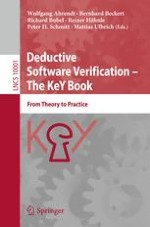Static analysis of software with deductive methods is a highly dynamic field
of research on the verge of becoming a mainstream technology in software
engineering. It consists of a large portfolio of - mostly fully automated -
analyses: formal verification, test generation, security analysis,
visualization, and debugging. All of them are realized in the state-of-art
deductive verification framework KeY.
This book is the definitive guide to KeY that lets you explore the full
potential of deductive software verification in practice. It contains the
complete theory behind KeY for active researchers who want to understand it in
depth or use it in their own work. But the book also features fully
self-contained chapters on the Java Modeling Language and on Using KeY that
require nothing else than familiarity with Java. All other chapters are
accessible for graduate students (M.Sc. level and beyond).<
<
The KeY framework is free and open software, downloadable from the book
companion website which contains also all code examples mentioned in this
book.
